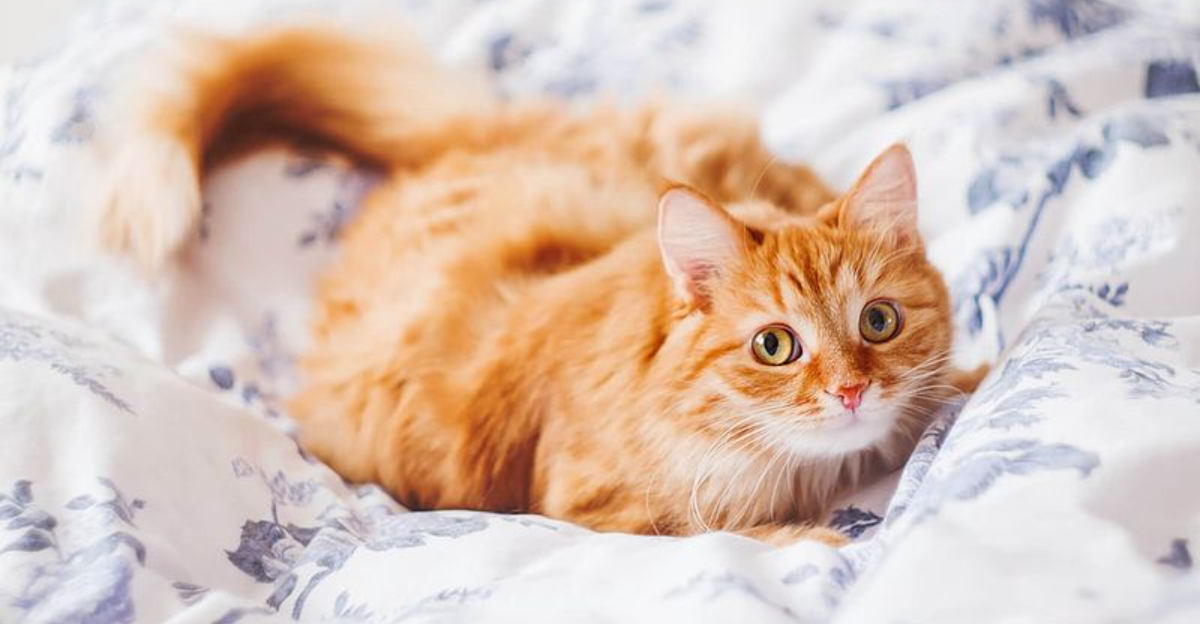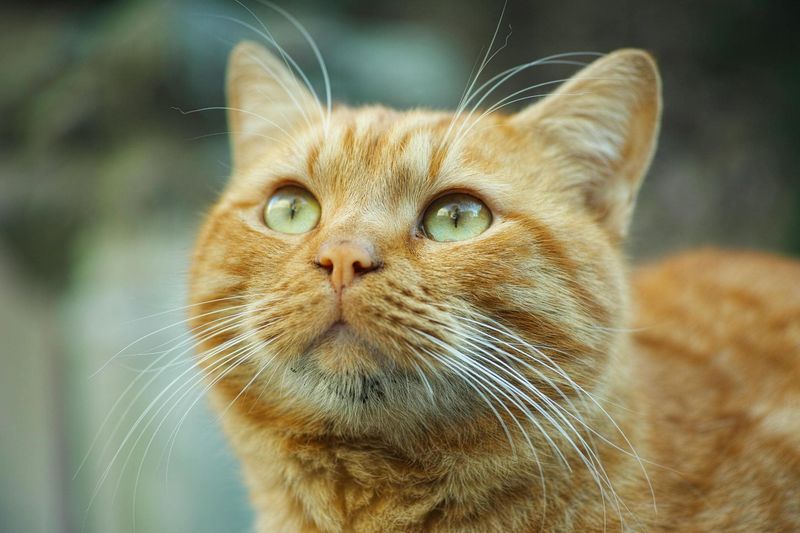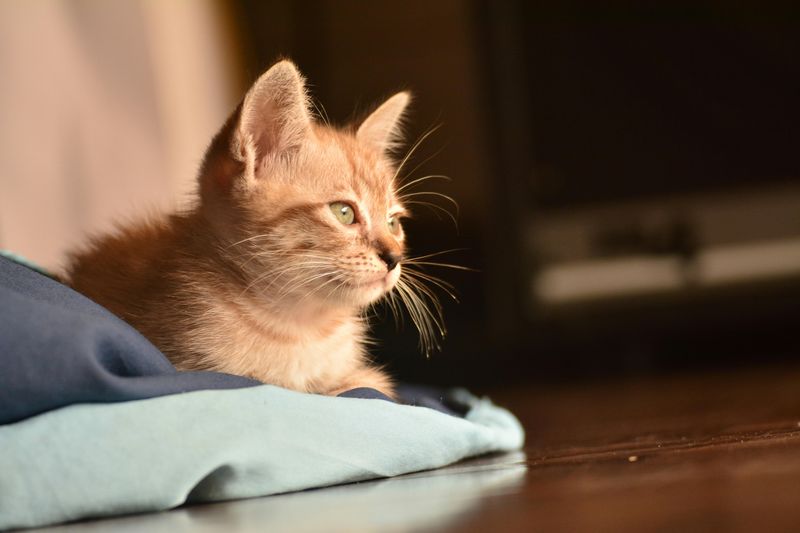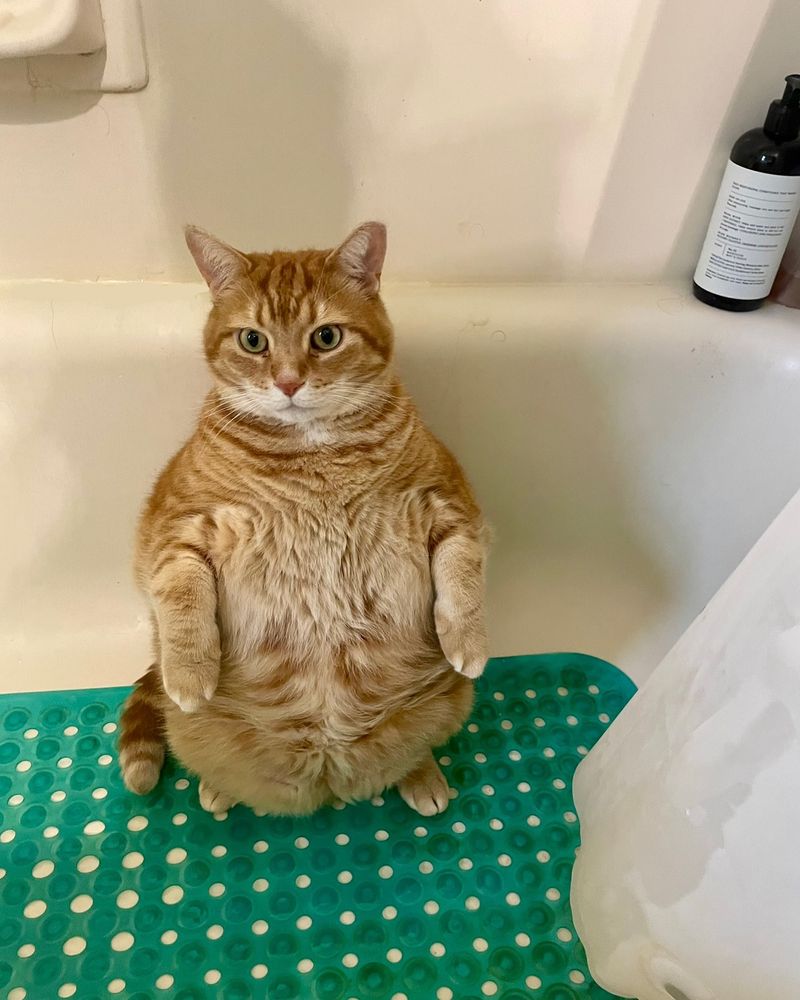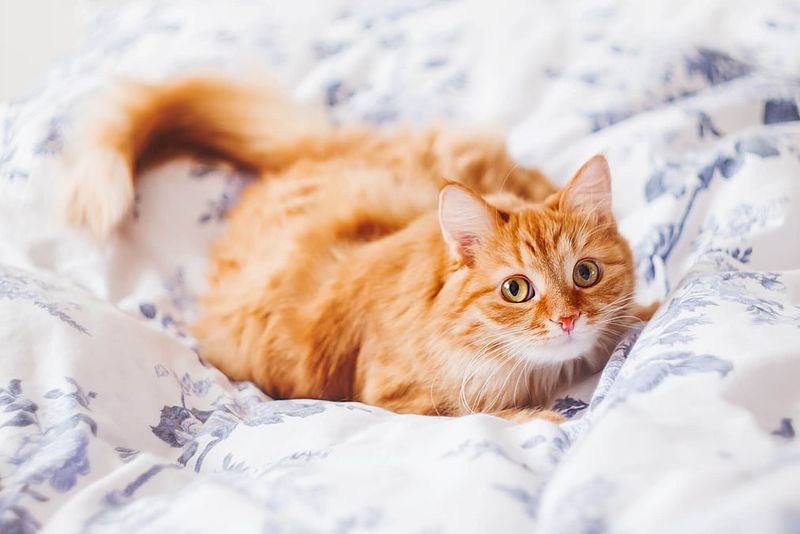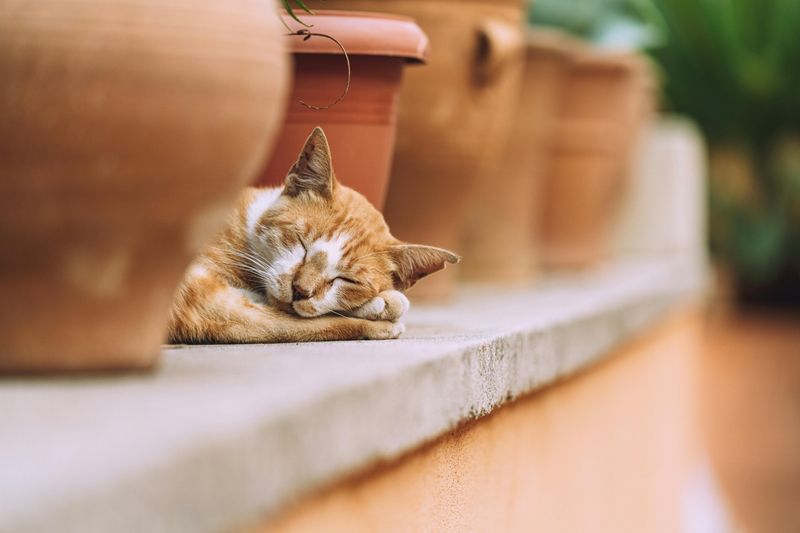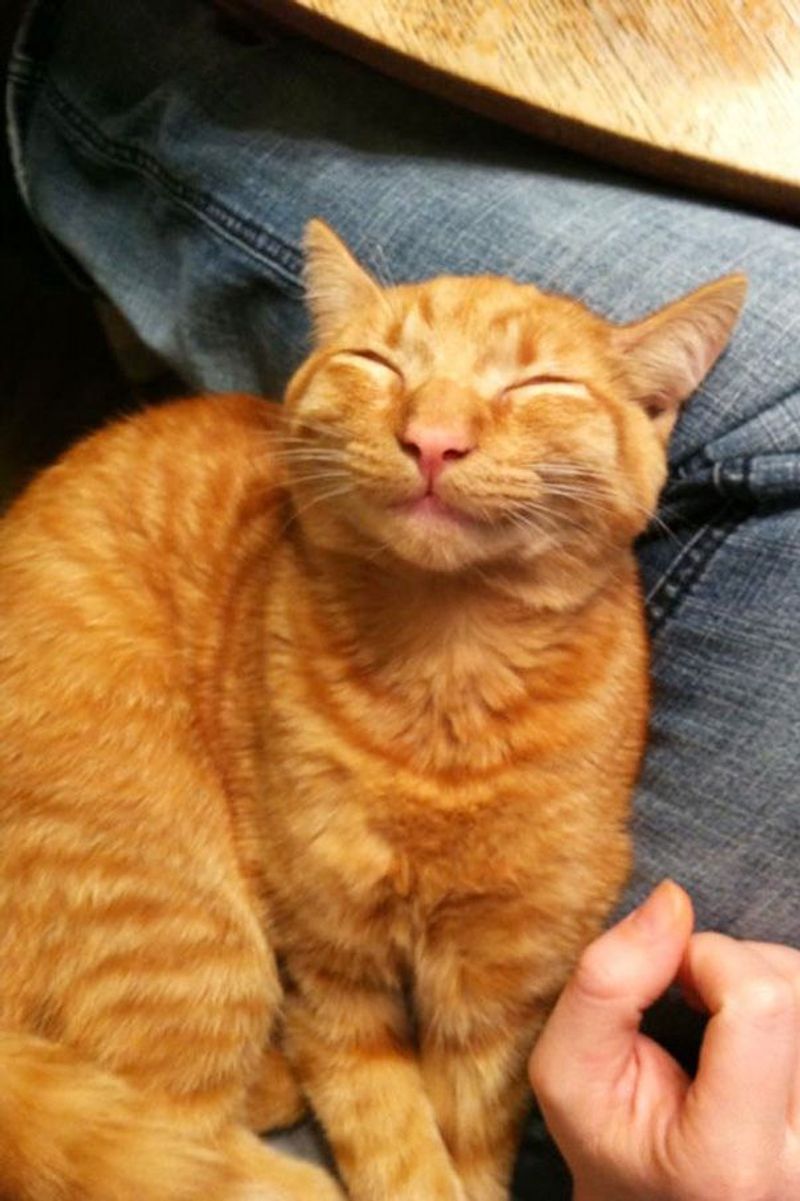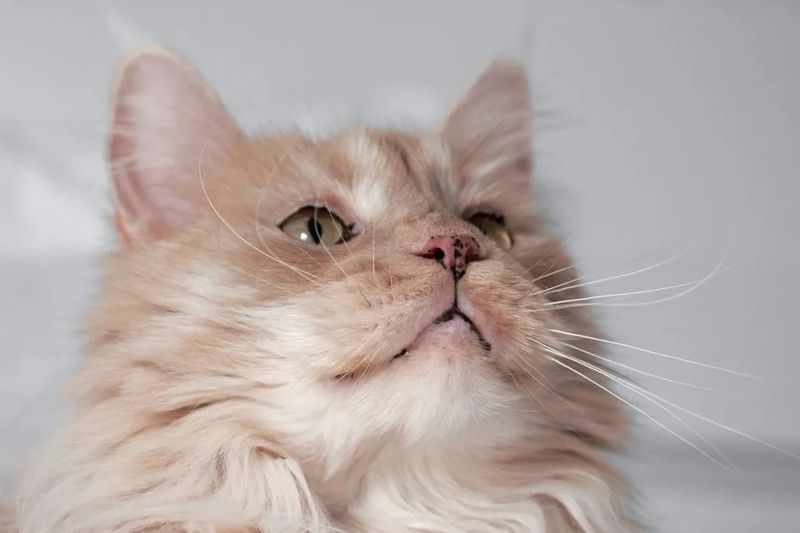📖 Table of Content:
- 1. Most Orange Cats Are Male
- 2. They’re All Tabby Cats—Even If They Don’t Look Like It
- 3. Their Color Comes From a Specific Pigment
- 4. They Tend to Be More Affectionate
- 5. They’ve Got a Reputation for Mischief
- 6. Some Are Named After Food—and Love It
- 7. There’s a Cultural Superstition Around Them
- 8. They Can Develop “Freckles”
Cats come in a rainbow of coat colors, but there’s something undeniably special about orange ones. Whether it’s their vibrant coloring, mischievous expression, or that charming “I-run-this-house” attitude, orange cats have carved out a unique spot in pop culture—and in the hearts of cat lovers everywhere. From Garfield’s sarcasm to Puss in Boots’ smolder, these fiery-furred felines have a lot more going for them than meets the eye.
While many people admire orange cats for their looks, few realize just how fascinating these ginger kitties truly are. There’s a swirl of genetics, behavior quirks, and even a touch of superstition that makes orange cats more than just adorable pets. Once you dig a little deeper, you’ll find that they’re walking contradictions: bold yet cuddly, lazy yet curious, goofy yet clever.
So if you’ve ever loved an orange cat—or considered bringing one into your life—prepare to be amazed. These eight facts might surprise you, charm you, or even make you laugh. But above all, they’ll deepen your appreciation for these lovable little sunbeams on four legs.
1. Most Orange Cats Are Male
Statistically speaking, a huge majority of orange cats—around 80%—are male, and this is all thanks to genetics. The gene that causes orange coloring, known as the O gene, resides on the X chromosome. Since males only have one X chromosome (XY), they only need one copy of this gene to show that glorious orange coat. Females, having two X chromosomes (XX), must inherit the orange gene from both parents, which is less likely. This basic biological difference accounts for the disproportionate number of orange males lounging in sunny windowsills across the world. So, if you’ve ever noticed more orange tomcats than tortoiseshell queens, now you know why. It’s not just chance—it’s science in action.
2. They’re All Tabby Cats—Even If They Don’t Look Like It
Surprisingly, every orange cat is genetically a tabby, regardless of how faint or subtle their stripes might be. Their fur might appear solid at first glance, but look closer and you’ll often spot those soft swirl patterns or tiger-like striping. This is because the tabby gene is responsible for how pigment is expressed in the cat’s fur, and all orange cats inherit this pattern by default. The most recognizable feature is the “M” shape on their foreheads, a universal tabby hallmark. Even breeds that typically have solid-colored coats still display tabby markings when they come in orange. In essence, orange just amplifies the tabby pattern, making it more vivid and noticeable. So, even if your orange kitty looks like a creamsicle, it’s a tabby through and through.
3. Their Color Comes From a Specific Pigment
Not all cat colors are created the same, and orange cats owe their fiery coats to a pigment called pheomelanin. This pigment is the same one that gives red hair its unique tone in humans, creating a fun connection between orange cats and redheaded people. The concentration and expression of pheomelanin can vary, which is why some orange cats are light cream while others are deep copper. Unlike eumelanin, which produces black and brown hues, pheomelanin focuses on warm tones and vibrant saturation. This pigment doesn’t just influence fur color; it can also affect eye and nose tones, giving orange cats a particularly warm appearance. The genetic mechanisms behind coat color are incredibly intricate, but in orange cats, pheomelanin is the standout star. It’s quite literally what gives them their glow.
4. They Tend to Be More Affectionate
Anecdotally, orange cats have developed a reputation for being extra affectionate and people-oriented. Many cat owners claim that their orange feline is the most social and cuddly of their entire clowder. This perception might stem from how people treat these cats—since their warm coloring is associated with friendliness, they may receive more warmth and attention in return. That attention, in turn, could reinforce outgoing behavior, creating a feedback loop of affection. Some studies suggest male cats in general may be more laid-back and trusting, which could overlap with the high number of orange males. While it’s not a hard rule, the stereotype of the cuddly orange cat persists for good reason. Whether it’s learned or innate, their charm is hard to resist.
5. They’ve Got a Reputation for Mischief
Orange cats have become unofficial mascots of feline chaos thanks to social media, memes, and their undeniably curious nature. Known for getting into drawers, knocking over cups, and leaping into laundry baskets, these cats are masters of comedic timing. Their boldness often translates into more daring behavior, making them seem more adventurous (or just more shameless). This quirky conduct has become part of the orange cat mythos, with viral videos reinforcing the idea that they’re the clowns of the cat world. While all cats can be silly, orange ones seem especially unbothered by consequences. There’s something about their fearless attitude that makes even their mischief endearing. As troublemakers go, they wear it well.
6. Some Are Named After Food—and Love It
Creative naming is half the fun of adopting a pet, and orange cats inspire some of the most delicious choices. Owners frequently name them after snacks like Pumpkin, Cheeto, Marmalade, Carrot, and even Nacho. These names aren’t just playful—they often match the cat’s personality to a tee. A zesty cat named Chili or a mellow one named Peaches adds an extra layer of fun to their identity. Plus, people tend to associate orange with warmth and comfort, making food names feel especially fitting. Whether you’re naming a kitten or laughing at someone else’s cat named “Tang,” the connection between color and cuisine is irresistible. It’s the kind of naming trend that’s as charming as the cats themselves.
7. There’s a Cultural Superstition Around Them
In some parts of the world, orange cats are considered harbingers of luck and happiness. Folklore links them to sunshine and warmth, both literal and emotional, bringing cheer wherever they go. Their golden hue often symbolizes abundance, prosperity, and protection in various cultures. In Celtic lore, for instance, cats with fiery coats were believed to possess magical qualities. Even in modern times, people report feeling emotionally uplifted by the presence of an orange cat. Whether you believe in luck or not, it’s hard to deny their comforting energy. Simply put, their very presence feels like a little bit of magic.
8. They Can Develop “Freckles”
As orange cats age, it’s not unusual for them to develop tiny black spots on their lips, gums, or even eyelids—a condition known as lentigo. These “freckles” are caused by an increase in melanin and are perfectly harmless, though they might give your cat a distinguished look. Lentigo is more common in orange, calico, and tortoiseshell cats, likely due to similar genetic pathways related to pigmentation. These dark spots often appear gradually and can increase with age, but they’re not something to worry about. Instead, they’re just another charming quirk of orange cats that makes them unique. Some owners even say the freckles give their cats more character or make them look wiser. In the end, it’s one more reason to adore your orange companion.
